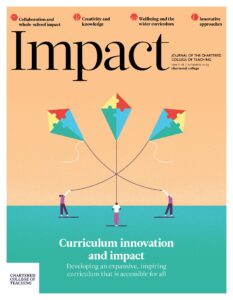Problem solved: Developing confidence in Year 5 girls through collaborative problem-solving
Written by: Lucie Neal

9 min read
LUCIE NEAL, KENSINGTON PREP SCHOOL, UK
Introduction
One of the main methods for teaching mathematics at Kensington Prep School is through problem-solving. Within the teaching of mathematics, emphasis is placed on how girls learn to use the skills that they are given to deal with real-life situations and on the ability of mathematical reasoning to equip them to make sense of problem-solving. Since teaching at Kensington Prep, I have observed mixed attitudes among the girls towards mathematics, and while they appear to like the subject and engage in problem-solving, not all girls believe that they are good at it.
A recent study conducted by the Organisation for Economic Co-operation and Development suggested that girls performed better when engaged in collaborative problem-solving (OECD, 2017). Findings from other studies (Brijlall, 2015; DeMatteo and Johanning, 2010; Scoular et al., 2020) also indicate the successes of collaborative problem-solving in mathematics.
It was aga
Join us or sign in now to view the rest of this page
You're viewing this site as a guest, which only allows you to view a limited amount of content.
To view this page and get access to all our resources, join the Chartered College of Teaching (it's free for trainee teachers and half price for ECTs) or log in if you're already a member.
- Brijlall D (2015) Exploring the stages of Pólya’s problem-solving model during collaborative learning: A case of fractions. International Journal of Educational Science 11(3): 291–299.
- DeMatteo R and Johanning D (2010) Informing practice: A model approach to problem solving. Mathematics Teaching in the Middle School 16(3): 132–135.
- Mertler CA (2013) Classroom-based action research: Revisiting the process as customizable and meaningful professional development for educators. Journal of Pedagogic Development 3(3): 38–42.
- Organisation for Economic Co-operation and Development (OECD) (2017) PISA 2015 collaborative problem-solving framework. In: PISA 2015 Assessment and Analytical Framework: Science, Reading, Mathematics, Financial Literacy and Collaborative Problem Solving. Paris: OECD Publishing, pp. 131–171.
- Pólya G (1945) How to Solve It: A New Aspect of Mathematical Method. Princeton, NJ: Princeton University Press.
- Scoular C, Eleftheriadou S, Ramalingam D et al. (2020) Comparative analysis of student performance in collaborative problem solving: What does it tell us? Australian Journal of Education 64(3): 282–303.
0
0
votes
Please Rate this content
Subscribe
Please login to comment
0 Comments
Oldest
Newest
Most Voted
Inline Feedbacks
View all comments










